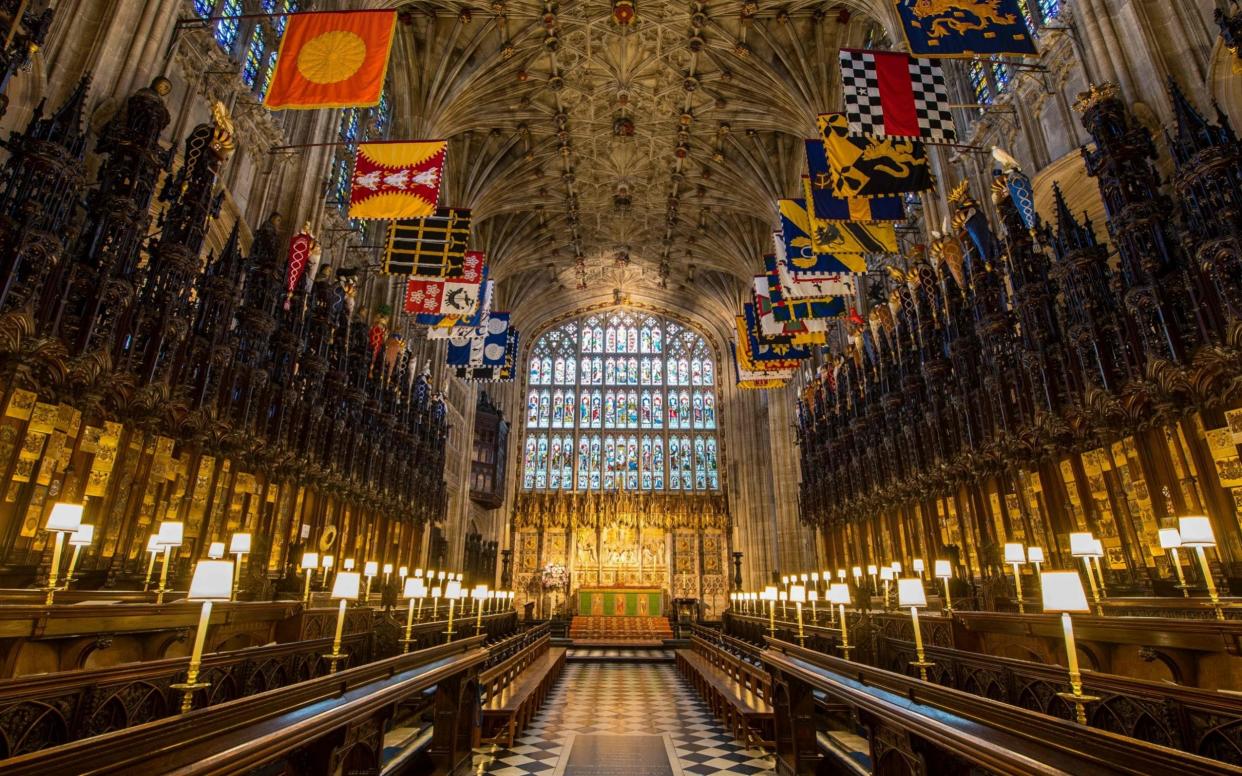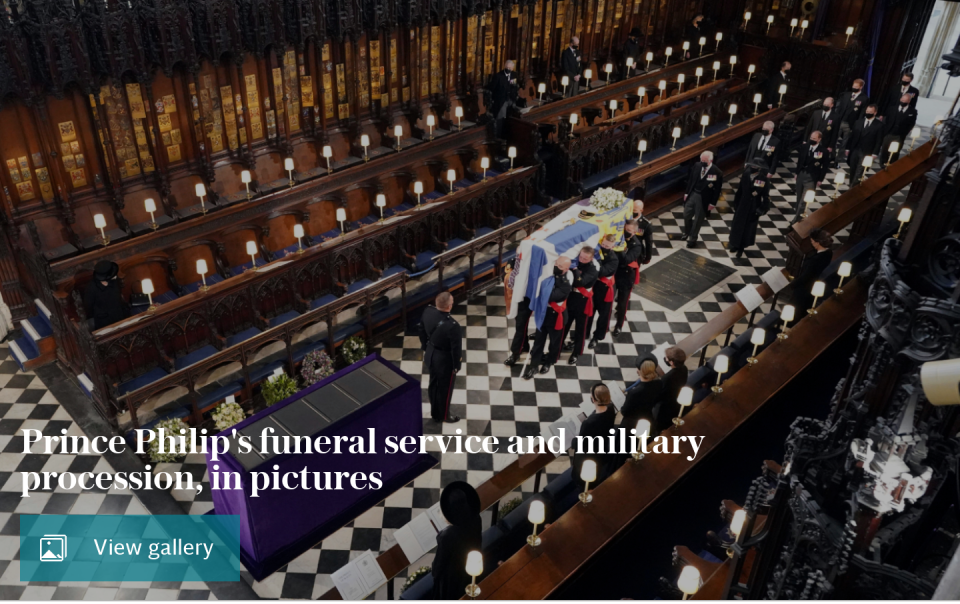St George's Chapel: inside the Royal family's parish church

- Oops!Something went wrong.Please try again later.
- Oops!Something went wrong.Please try again later.
Prince Philip’s funeral took place at St George’s Chapel, Windsor.
His English oak coffin was carried from the Private Chapel in the Castle to St George's in a purpose-built Land Rover, for a service that was attended by just 30 members, given Covid restrictions.
So what is St George’s Chapel, and what is its significance to the Royal family?
History of St George's Chapel
St George’s Chapel is the centre of the College of St George, a cathedral-like complex within Windsor Castle that also includes a choir school, library and archives. The founding of the College goes back to 1348 under Edward III, who also founded the College of St Stephen, which went on to become the modern-day Westminster Palace.
The current building that houses St George’s Chapel was completed in 1528, under the reign of Henry VIII.
The chapel has had a storied past since then, including suffering heavy damage during the Civil War, and becoming the burial site for the executed Charles I. During the Restoration, it underwent extensive repairs.

Several monarchs have left their mark on the chapel over the centuries. George III funded a large restoration during the end of the 18th Century, and Queen Victoria rebuilt part of the choir in memory of her late husband, Prince Albert.
The chapel has an unusual designation as a “Royal Peculiar” – although it’s an Anglican church, the Archbishop of Canterbury does not have jurisdiction over it. Instead, it’s under the direct control of the monarch, and its day-to-day affairs are run by the Dean of Windsor. When the Archbishop of Canterbury attends, he only does so at the invitation of the Dean of Windsor.
Despite being within Windsor Castle, it is usually open to the public for worship, and on certain days for tours.

Design
The chapel is located within Windsor Castle, on the opposite side of the Round Tower to the state and private apartments.
It is built in the “perpendicular gothic” style which was popular at the time – meaning it has large, long windows and arches with pointed tops. In recent times, its ceiling has been decorated with banners of the 24 knights of the Order of the Garter, who meet in the chapel every June for the Garter Service.
Prince Philip is said to have been a great admirer of the chapel, calling it an “architectural marvel”.
At full capacity, it seats around 800 people, although due to Covid regulations, Prince Philip’s funeral was attended by a maximum of 30 guests. This capacity is much smaller than other of the Royals’ favourite churches, like Westminster Abbey, which seats around 2,000 people, and St Paul’s Cathedral, which can host 3,500.
Royal use
The chapel has been the site of many important Royal moments, of both national and personal family importance.
It has been the venue of dozens of Royal weddings, and was a particularly popular place to get married in the Victorian era, when several of Queen Victoria’s children were wed there.
In more recent times, it has been the wedding venue of choice for Princess Eugenie and Jack Brooksbank, the Duke and Duchess of Sussex, and Lady Gabriella Windsor and Thomas Kingston. The Earl and Countess of Wessex were also married there in 1999, and the Queen’s grandson Peter Philips married Autumn Kelly there in 2008.

Prince Harry was christened there, and Prince Charles and the Duchess of Cornwall had their marriage blessed there, after a civil wedding in Windsor Guildhall.
Ten sovereigns through the ages have been interred in the chapel, too, including Henry VIII, Charles I and Georges III to VI. In recent times, the Queen Mother was buried there, and the ashes of Princess Margaret were laid to rest.
Outside of official use, it is also used for the personal worship of the Royal family, and is their parish church. There is also a private chapel within Windsor Castle which is not open to the public, which is where Prince Philip’s body was laid before his funeral.
St George’s Chapel was well-known by Prince Philip after more than 70 years of living in Windsor, and attending Garter Services every June. He had attended many weddings and christenings there before, as well as funerals including that of Princess Margaret.

